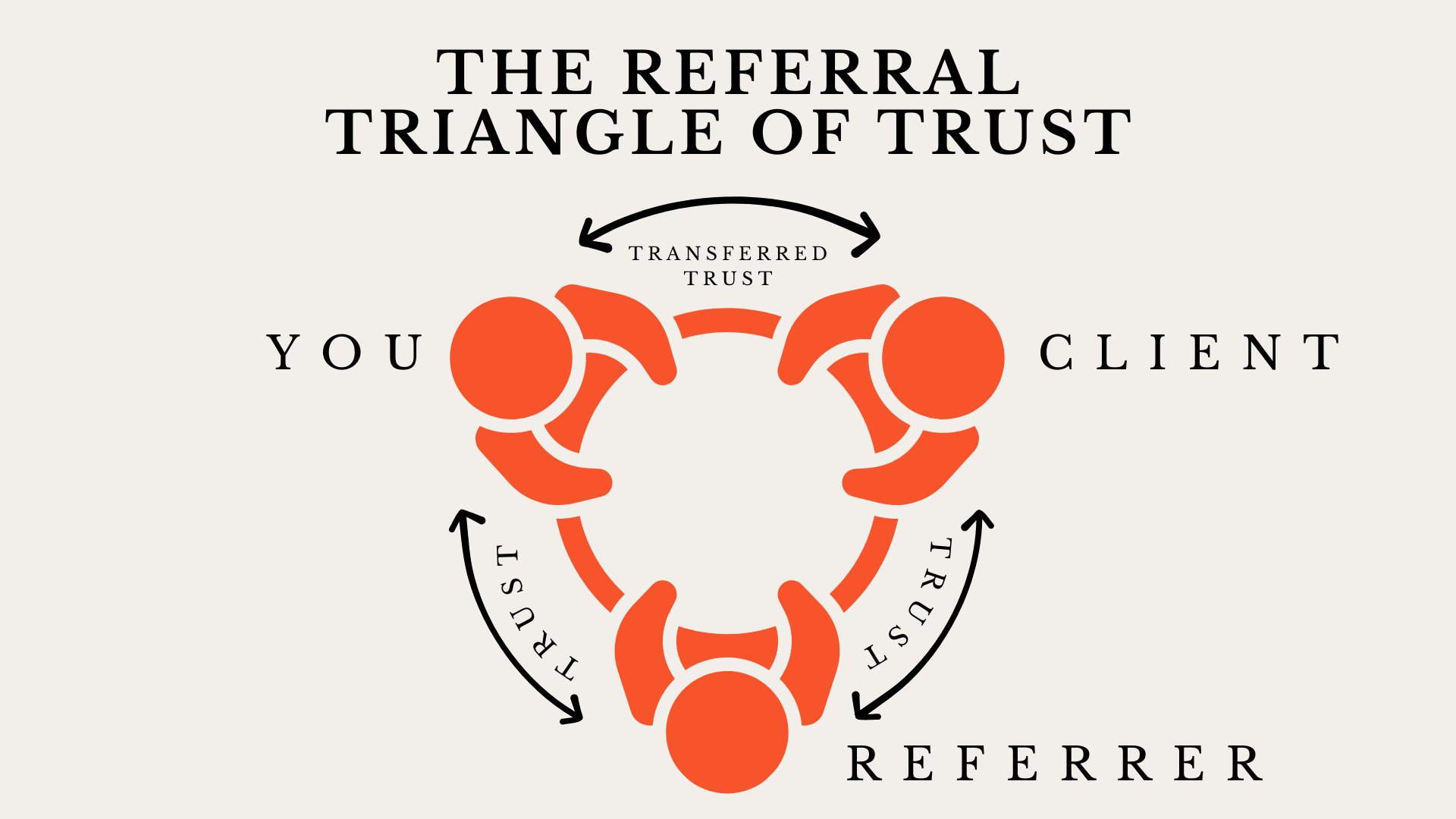
The Referral Triangle of Trust: Leveraging your business relationships
Back in the 1980s, when I was just cutting my teeth in the professional world, I learned an important lesson about a business that has guided my approach ever since - the pivotal role of trust.
My boss at the time, a seasoned connector and a woman who started her own business with zero dollars but a lot of determination, taught me the foundational idea that helping people and building relationships over time leads to trust, which eventually leads to dollars in the bank.
This approach transformed me into a connector, eventually leading me to become part of a business whose sole focus is generating referrals through trust (BNI). I still pinch myself when I think about that pathway.

The Genesis of the Referral Triangle
During those early days, I began learning about what I now know to be called the "Triangle of Trust". The concept is straightforward but powerful. The triangle has three points: “You”, the “Referrer’, and the “Client”. The lines between these are actually channels of trust.

The Anatomy of the Triangle
You and the Referrer: This connection is foundational. The referrer knows you, trusts you and is willing to stake their reputation by recommending you.
The Referrer and the Client: Here, there's an established relationship based on previous interactions, reliability, and satisfaction.
You and the Client: This line doesn’t exist initially. It forms only when the referrer introduces you to the client, effectively transferring their trust in you to the client.
How Trust Transference Works
The magic happens when the referrer introduces you to the client. This isn't merely a handover of contact details; it's the passing of trust. Suddenly, you're not a stranger to the client. You're someone who comes pre-vetted, almost like a friend of a friend. This transference makes the potential for closing business much higher than cold interactions.
Personal Experience with Trust Transference
Early in my career, I used to run regular network lunches where industry suppliers and professionals would come together. These were different from your typical meet-and-greet sessions. We talked about the business climate, ongoing projects, and client needs. I connected people during these lunches based on deeply understanding their capabilities and how well they could meet a client’s needs. I only introduced people I knew could deliver, ensuring my relationships remained strong and my reputation intact. I always wanted to come out looking good to all parties.
I had a lot of success helping other people but it took a while for me to get business in return. But when it came it was amazing. I also won the two largest jobs the business had ever seen and it was such a simple process because the people that connected me had done all the work before I’d even met the client. Closing the deal with fast and simple in every instance as the referral partners had edified me before I’d even entered the room.
Eventually I started to train other people in the company across Australia and NZ how I was having this success. The principles of which I still use today in a completely different business.

Building and Sustaining the Triangle
Creating a successful Triangle of Trust involves more than just making introductions. Here's how I nurtured these connections:
Regular Engagement: I didn’t wait for a need to arise to contact my contacts. Regular updates, casual meetings, and consistent support helped keep the relationships strong.
Understanding Needs: I could make more timely and relevant connections by keeping abreast of what my peers and their businesses needed.
Feedback Loops: After every introduction, I followed up. What went well? What could be better? This showed that I cared about the outcomes and helped me refine future introductions.
The Impact of a Well-Used Triangle
Understanding the Triangle of Trust has a profound impact. Not only are conversion rates for new business extremely high, but the speed of business accelerates, too. Clients save time and energy because they don’t have to vet a stranger—they already have a trusted recommendation. This approach to business, based on personal introductions and endorsements, ultimately simplifies decision-making for the client. And we are all after a simpler life, aren’t we?
At the end of the day, business, in its purest form, is about solving problems. A referral through the Triangle of Trust is an efficient, reliable way to solve someone’s problem. This method leads to greater satisfaction, higher conversion rates, and deeper business relationships if approached correctly. By embedding trust in every facet of your interactions, you solve problems and build an enduring network of mutual support and respect.
The principles of the Triangle of Trust remain as relevant as ever. In a digital age where personal connections can sometimes feel fleeting or superficial, the need for genuine trust has only intensified. The power of trust isn’t just a strategy; it’s a necessity, and I hope that by explaining this concept, you can use it in your business and life.
